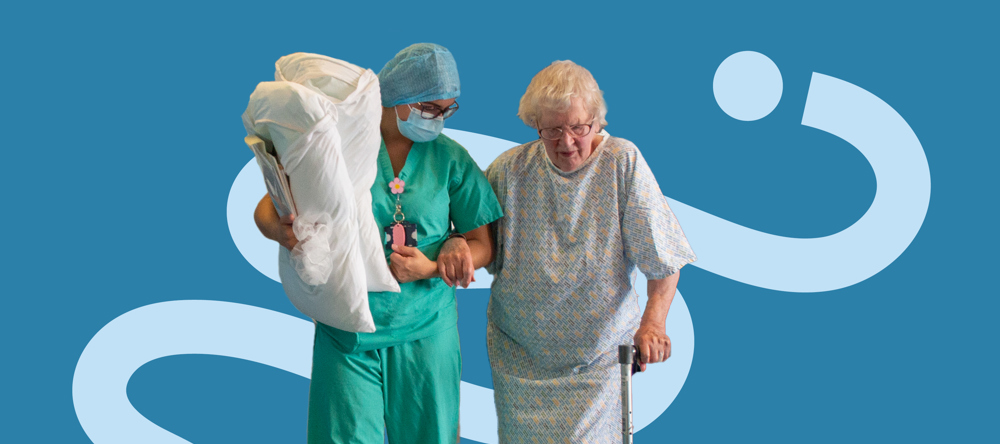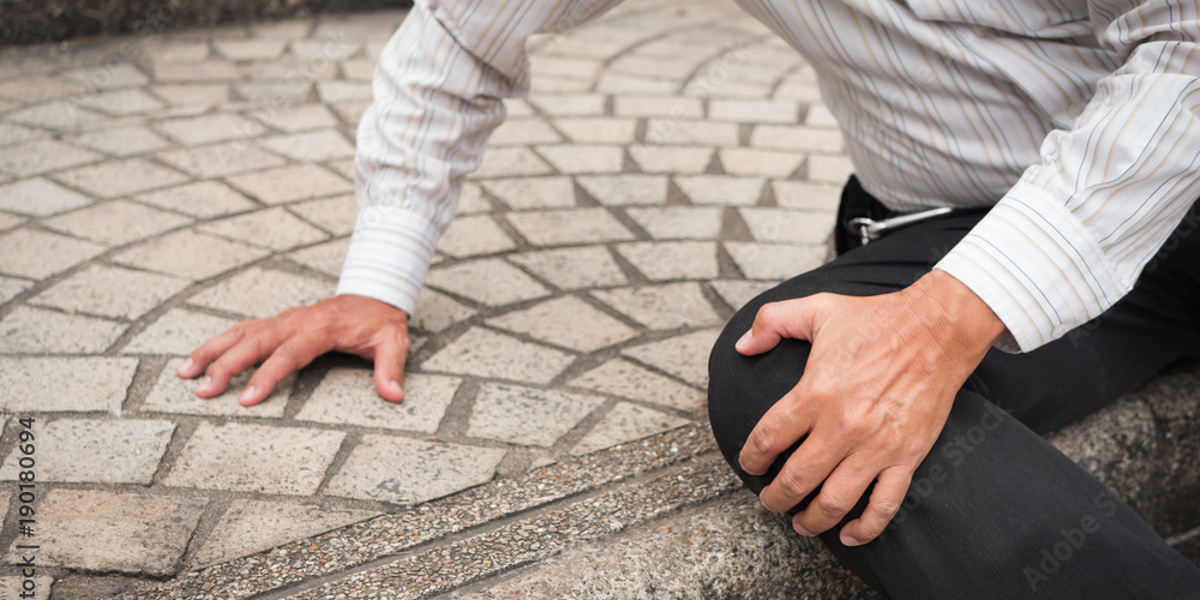
Background
Arthritis usually happens where there is gradual wear and tear of a joint. For a few people, this will be the result of a previous problem or injury but usually it happens without a known cause. Wear and tear of the normal cartilage covering the surface of the joint causes exposure causing the bone underneath to become damaged. This causes pain and stiffness in the hip or knee which can interfere with normal activities.
What are the benefits of surgery?
In all cases, you should get less pain and be able to walk more easily. In the case of a partial knee replacement, you should be able to bend the knee better and it will feel more like a normal knee than with a total knee replacement.
Your inpatient pathway
- There are 6 stages to your inpatient journey with us
- Referred to Fife Orthopaedics by your GP, you and your consultant decide that your best option is surgery.
- Are you fit for surgery? Attend for your pre operative assessment appointment.
- As an inpatient, you will have your surgery at the NTC.
- Stay 1-3 days at the NTC getting ready to recover fully at home.
- At home, help speed up your recovery by doing all recommended physiotherapy.
- Come and see us for your check up after 6-12 weeks.
Your operation
There are many different types of hip and knee surgery and your surgeon will discuss the best option for you. The operation usually takes one hour to 90 minutes. Your surgeon will cut open your hip or knee then insert an artificial joint made of metal, plastic, ceramic or a combination of these. The implant is then secured into the bone and the wound closed up with either stitches of clips.
How do I prepare for my operation?
There is growing evidence to support the benefits of getting into the best health before you undergo surgery. It is a good idea to do as much moderate exercise as your pain will allow but in particular make sure that you do a pre-surgery exercise that you were given at your pre surgical appointment or call. If you smoke, stop smoking as your chest needs to be clear for your anaesthetic. Drink only moderate alcohol. It is worth ensuring that you eat well in the days and weeks ahead too to speed up your recovery. You can read more about how to get ready for surgery using these links.
In the days prior to surgery
- In the week running up to your operation, don’t shave or wax the area where the cut is to be made.
- Try to have a bath or a shower either on the day before or the day of the operation.
- Keep warm around the time of the operation and let your healthcare team know if you feel cold.
- If you are diabetic, keep your blood sugar levels under control.
Risks and complications
The vast majority of patients make a speedy recovery after hip and knee surgery. It is important to remember however that this is a major operation and complications can occur. Your surgeon will discuss these in more detail but there are some surgical risks to be aware of.
General surgical risks
There are risks associated with any surgery and you can find out more about these here. Link to leaflet on general surgical risks.
Specific risks associated with this surgery
With hip and knee surgery, there are some specific risks to be aware of.
- Damage to the nerves around your hip or knee leading to weakness, numbness, or pain.
- Damage to blood vessels around your hip leading to loss of circulation to your leg and foot which would require immediate restorative surgery.
- Split in the bone which may need fixed or wired.
- With hip surgery there is risk of leg length difference which may result in you requiring a shoe raise
- Bone forming in muscles around your hip replacement causing loss of movement.
- Infection in the location site whether hip or knee this would require one or further operations to control the infection.
- Wear or loosening of the joint without infection which would require a new joint, (risk 1 in 20 in first 15 years)
- Dislocation of your hip or knee which would normally require another procedure.
After your surgery
You’ll be transferred after your operation to a recovery area and then to a ward. You’ll normally have an x-ray to check your hip knee position. As getting out of bed and walking is an important part of your recovery, your physiotherapist will help you to start walking with the help of a mobility aid usually on the day of surgery or the next day.
If you have had hip surgery, your surgeon or physiotherapist will tell you how much weight you can put on your leg. With knee surgery, getting your knee to bend will take patience. You will need to keep the wound dry for 4 -5 days and uses a waterproof dressing when bathing. The healthcare team will let you know if you need to have clips or stitches removed.
Related content

Patient advice
- Patella dislocation
- Hip Osteoarthritis management and rehabilitation
- Hip Osteoarthritis
- Greater Trochanteric Pain Syndrome
- Neck (Cervical) Nerve Root Pain
- Knee Osteoarthritis management and rehabilitation
- Knee Osteoarthritis
- Anterior Cruciate Ligament (ACL) Injury Conservative Management
- Medial Patellofemoral Ligament Reconstruction
- Meniscal (knee cartilage) wear and repair
Going home
We understand that most people wish to recover at home. You can go home when your pain is under control and you can get around safely and any care you require is in place. See our post surgical issues page for where to turn to if you think you need help post-surgery.
You must follow any advice given by the team and be prepared for using walking aids until you can walk without. You may also notice a patch of numb skin next to your scar after knee surgery. This is normal and becomes less noticeable with time. You will be given a week’s supply of painkillers and your usual medication with any changes explained to you. All patients will receive a discharge letter and one will also be sent to your GP.